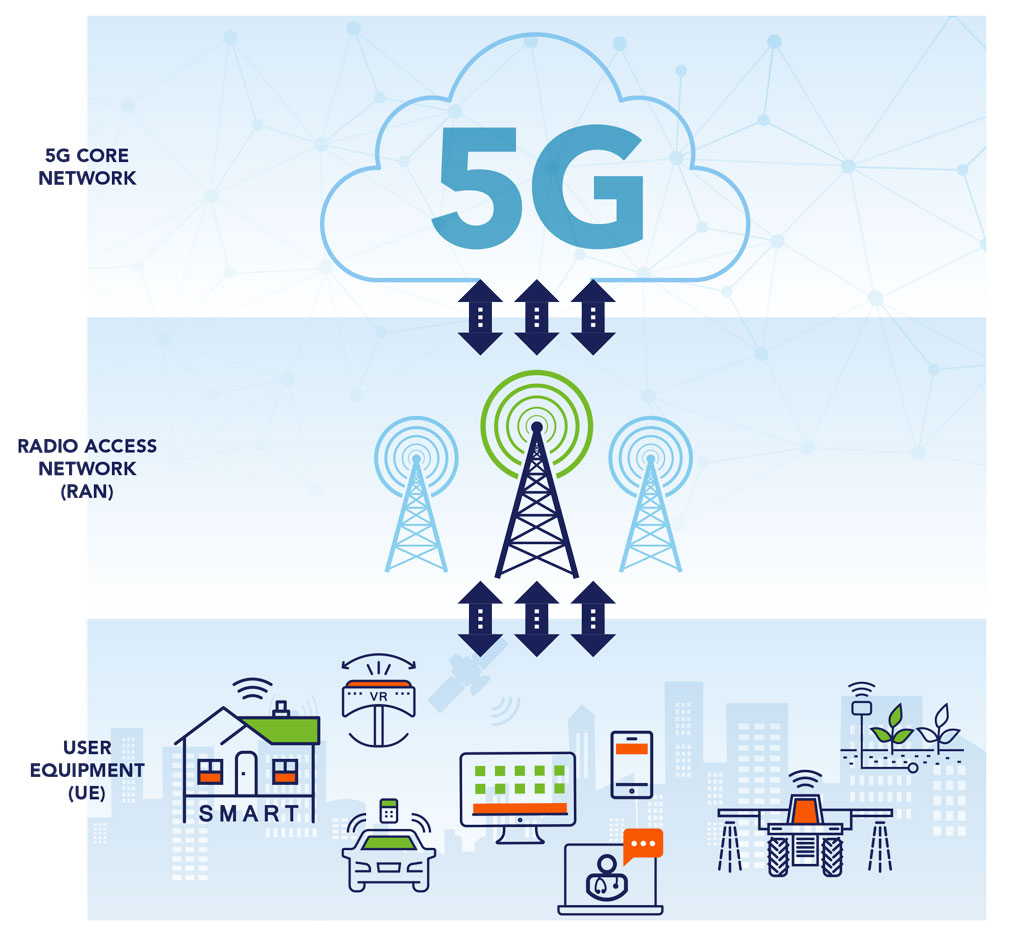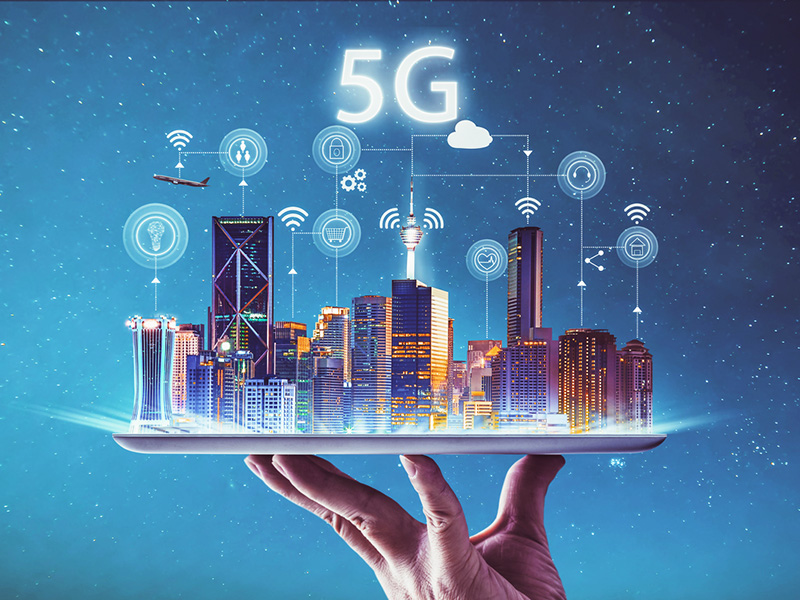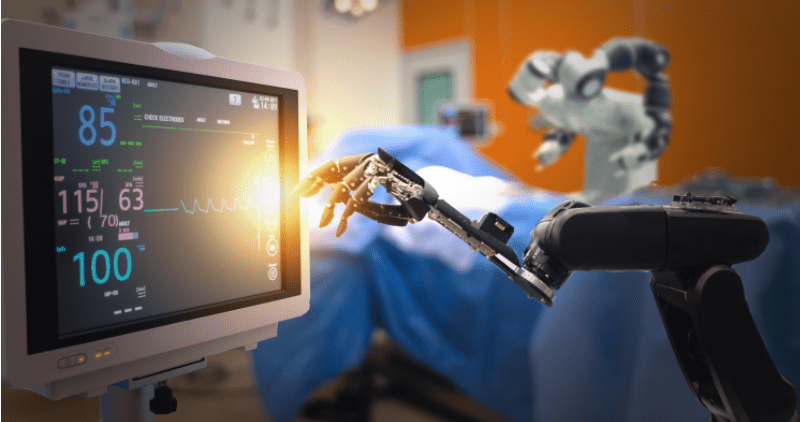The rollout of 5G technology isn’t just about faster download speeds or buffering-free video streams. It’s a foundational shift in how digital systems communicate, interact, and evolve. While consumers may notice the difference when streaming 4K content on their phones, the real transformation is happening behind the scenes—reshaping industries, enabling new business models, and creating digital opportunities that were previously unimaginable.
For entrepreneurs, freelancers, professionals, and investors, the implications are profound. The leap from 4G to 5G is not incremental; it’s exponential. With lower latency, increased bandwidth, and support for massive device connectivity, 5G is becoming the backbone of a new digital economy. This isn’t about upgrading networks—it’s about reimagining what’s possible.

Rethinking Connectivity: Beyond Speed
When most people hear “5G,” they think of speed. And yes, 5G can deliver peak data rates up to 100 times faster than 4G. But speed is only one piece of the puzzle. The true power of 5G lies in three core technical capabilities: ultra-reliable low latency communication (URLLC), enhanced mobile broadband (eMBB), and massive machine-type communication (mMTC).
Ultra-low latency—dropping from around 30–50 milliseconds in 4G to as low as 1 millisecond in 5G—means near-instantaneous response times. This opens doors for applications where timing is everything. Enhanced mobile broadband allows for richer media experiences, supporting high-definition video, augmented reality (AR), and virtual reality (VR) at scale. Massive machine-type communication enables the connection of millions of devices per square kilometer, forming the foundation for large-scale Internet of Things (IoT) ecosystems.
Together, these capabilities don’t just improve existing services—they create space for entirely new categories of digital business.
The Rise of Edge Computing and Real-Time Decision Making
One of the most significant shifts enabled by 5G is the rise of edge computing. Traditional cloud computing relies on centralized data centers, which can create delays in processing information. But with 5G’s low latency, data can be processed closer to where it’s generated—on local servers or even on the device itself.
This shift is critical for industries where split-second decisions matter. Consider autonomous vehicles. A self-driving car must analyze sensor data, detect obstacles, and respond in real time. Waiting for instructions from a distant cloud server could be dangerous. With 5G and edge computing, vehicles can process data locally and communicate with nearby infrastructure—traffic lights, other vehicles, pedestrian sensors—almost instantaneously.
This same principle applies to smart manufacturing. Factories equipped with 5G-connected sensors can monitor equipment performance, predict maintenance needs, and adjust production lines in real time. A machine about to fail can trigger an automated work order before it causes downtime. This predictive maintenance model reduces costs, improves efficiency, and minimizes human intervention.
For digital entrepreneurs, this means new opportunities in developing edge-based software solutions, AI-driven analytics platforms, and real-time monitoring tools tailored to specific industries.
Smart Cities and the Internet of Everything
5G is the catalyst for smarter, more responsive urban environments. Cities are beginning to deploy networks of sensors that monitor everything from traffic patterns and air quality to energy usage and waste management. These systems require constant, reliable connectivity—something 5G delivers.
Take traffic management, for example. In a 5G-enabled city, traffic lights can adjust in real time based on vehicle flow. Emergency vehicles can communicate with intersections to clear a path automatically. Public transportation systems can provide live updates based on precise location data, improving rider experience and operational efficiency.

But smart cities aren’t just about efficiency—they’re about equity and accessibility. Remote healthcare, for instance, becomes more viable when medical devices can transmit high-resolution imaging and patient vitals in real time. Rural clinics could connect with specialists in urban hospitals via telemedicine platforms supported by 5G networks, reducing disparities in healthcare access.
Freelancers and developers can tap into this space by building applications that interface with city infrastructure—mobile apps for public transit, platforms for citizen reporting, or data dashboards for urban planners. Investors might consider funding startups focused on urban analytics, energy optimization, or civic engagement tools.
Revolutionizing Retail and Customer Experience
Retail is another sector undergoing transformation thanks to 5G. Brick-and-mortar stores are no longer competing solely on product selection or price—they’re competing on experience. And 5G makes immersive, personalized shopping experiences possible.
Imagine walking into a store where your smartphone or smart glasses recognize your presence and instantly display personalized offers based on your purchase history. AR mirrors allow you to “try on” clothes without changing. Inventory systems update in real time, so staff can locate items instantly. Behind the scenes, AI analyzes foot traffic and adjusts store layouts dynamically.
Even e-commerce benefits. High-bandwidth 5G connections support rich media content, allowing brands to deliver interactive product demos, 360-degree views, and virtual showrooms. Smaller businesses can now compete with larger players by offering engaging digital storefronts that were once too resource-intensive.
For side hustlers and digital marketers, this opens new avenues in AR content creation, immersive advertising, and customer journey analytics. Platforms that enable small retailers to build 5G-ready experiences—like AR shopping apps or real-time inventory integrations—could become highly valuable.
Enabling the Future of Remote Work and Collaboration
Remote work has already reshaped the professional landscape, but 5G will push it further. Current video conferencing tools are functional but limited. Audio delays, frozen screens, and poor video quality disrupt collaboration. With 5G, these issues fade into the background.
High-fidelity video calls with multiple participants become seamless. Virtual meetings in VR environments—where team members appear as avatars in a shared digital workspace—become practical. Designers, engineers, and architects can collaborate on 3D models in real time, manipulating digital objects as if they were in the same room.
This isn’t just about convenience. It’s about unlocking new forms of creativity and productivity. A freelance designer in Nairobi can co-create a product prototype with an engineer in Seoul, using a shared AR workspace powered by 5G. A remote team can conduct virtual site inspections for construction projects, overlaying digital blueprints onto real-world views through AR glasses.
For professionals and jobseekers, mastering these emerging tools could become a competitive advantage. Learning how to navigate virtual collaboration environments, use AR design software, or manage distributed teams in immersive settings will be valuable skills.
The Explosion of IoT and New Business Models
The Internet of Things has been talked about for years, but widespread adoption has been limited by connectivity constraints. 4G networks struggle to handle the volume of devices and data that a fully connected world demands. 5G changes that.
With the ability to support up to one million devices per square kilometer, 5G makes large-scale IoT deployments feasible. This isn’t just about smart homes with connected thermostats and lights—it’s about entire ecosystems of interconnected devices generating actionable insights.
Agriculture, for example, is being transformed by precision farming. Sensors in fields monitor soil moisture, temperature, and nutrient levels. Drones equipped with cameras assess crop health. All this data is transmitted in real time over 5G, allowing farmers to optimize irrigation, reduce pesticide use, and increase yields.
Similarly, in logistics, shipping containers can be tracked with GPS and environmental sensors. Companies can monitor temperature, humidity, and location throughout a shipment’s journey. If a refrigerated container warms unexpectedly, an alert is sent instantly, preventing spoilage.
These capabilities enable new business models. Instead of selling a product, companies can offer it as a service. A manufacturer might sell “cooling as a service” for pharmaceutical shipments, guaranteeing temperature control through a network of 5G-connected sensors. A construction company could offer “equipment uptime as a service,” using predictive maintenance powered by real-time data.
For investors, this shift from product to service-based models represents a major opportunity. Startups that build platforms for managing IoT ecosystems, analyzing sensor data, or enabling subscription-based hardware services are positioned for growth.
Healthcare Goes Digital—And Immediate
Perhaps one of the most life-changing applications of 5G is in healthcare. Telemedicine has grown in recent years, but it’s often limited to basic consultations. 5G enables a new tier of remote care—remote surgery being the most dramatic example.
In 2019, a surgeon in China performed a liver resection on a patient 3,000 kilometers away using a 5G-connected robotic arm. The near-zero latency ensured precise control, making the procedure as safe as if the surgeon were in the same room. While remote surgery is still in its early stages, it hints at a future where medical expertise can be delivered anywhere, anytime.
Even outside of surgery, 5G enhances diagnostics and monitoring. Wearable devices can continuously track vital signs and transmit data to doctors in real time. Patients with chronic conditions like diabetes or heart disease can be monitored remotely, with AI algorithms detecting anomalies before they become emergencies.
For healthcare entrepreneurs, this opens opportunities in remote diagnostics, wearable tech, and AI-powered health platforms. Freelance developers might create apps that integrate with medical devices, while investors could back companies building secure, low-latency telehealth infrastructure.

Challenges and Considerations
Despite its promise, 5G isn’t a magic bullet. Deployment is uneven, with urban areas benefiting first while rural regions lag behind. Infrastructure costs are high, and spectrum allocation remains a regulatory challenge in many countries.
Security is another concern. With more devices connected and more data flowing, the attack surface for cyber threats expands. A compromised smart traffic light or medical device could have serious consequences. Businesses building on 5G must prioritize cybersecurity from the ground up, adopting zero-trust architectures and end-to-end encryption.
Privacy also comes into focus. The same sensors that improve city services or retail experiences can collect vast amounts of personal data. Companies must be transparent about data usage and comply with regulations like GDPR and CCPA.
For professionals and entrepreneurs, understanding these risks is as important as recognizing the opportunities. Success in the 5G era will require not just technical innovation, but ethical responsibility.
New Skills and Career Pathways
As 5G reshapes industries, it also reshapes careers. The demand for skills in network engineering, cybersecurity, data analytics, and AI is growing. But beyond technical expertise, soft skills like adaptability, systems thinking, and cross-disciplinary collaboration will be essential.
Digital professionals who can bridge gaps—between technology and business, between data and action—will be in high demand. A marketer who understands AR experiences, a project manager who can oversee IoT deployments, or a freelancer who builds immersive training simulations will have a distinct advantage.
Educational platforms like Coursera and edX already offer courses in 5G, IoT, and edge computing. Certifications from organizations like the 5G Open Innovation Lab or the IEEE can help professionals stay ahead of the curve.
The Entrepreneur’s Playground
For entrepreneurs, 5G is like a blank canvas. It doesn’t dictate what to build—it enables almost anything. The barriers to entry are lower than ever. A solo developer can create an AR app that runs on 5G networks. A small team can launch a smart agriculture startup with off-the-shelf sensors and cloud analytics.
The key is to focus on problems, not technology. Instead of asking, “What can I build with 5G?” ask, “What problem can be solved better with real-time, high-bandwidth, low-latency connectivity?” The answers might surprise you.
One example is Swaarm, a company using 5G and AI to enable real-time crowd analytics for events and retail spaces. Another is Augmedix, which uses Google Glass and 5G to help doctors document patient visits hands-free. These aren’t tech-first companies—they’re problem-first companies that happen to use 5G as an enabler.
Investment Opportunities on the Horizon
For investors, 5G represents a long-term play across multiple sectors. It’s not just about telecom stocks. It’s about companies building the infrastructure, applications, and services that run on 5G.
Semiconductor firms developing 5G chips, software platforms for IoT management, cybersecurity solutions for edge devices—all are poised for growth. Venture capital is flowing into startups focused on autonomous systems, smart cities, and immersive media.
Public markets also offer exposure. ETFs like the Global X 5G & Communication Tech ETF (5G) provide diversified access to 5G-related companies. But due diligence is essential. Not every company claiming to be “5G-enabled” is delivering real value.
A Connected Future, Built Today
The transition to 5G is not an overnight event. It’s a gradual evolution, unfolding over years. But the businesses and professionals who act now—learning the technology, experimenting with applications, building networks—will be the ones shaping the future.
This isn’t about waiting for the next big thing. The next big thing is already here, moving through fiber-optic cables, radio waves, and smart devices. It’s in the factory floor adjusting itself in real time, the farmer optimizing irrigation with satellite data, the doctor performing surgery from across the country.
For the entrepreneur, the freelancer, the investor, the remote worker, and the jobseeker, the message is clear: 5G isn’t just a faster network. It’s a new platform for innovation, a springboard for digital transformation, and a gateway to opportunities that haven’t even been imagined yet.
The infrastructure is being laid. The tools are emerging. The only question left is: what will you build with it?
To stay updated on 5G developments, consider following resources like the GSMA Intelligence reports, the IEEE 5G Initiative, or industry publications like Light Reading. For hands-on experience, platforms like Microsoft Azure’s 5G solutions or AWS Wavelength offer cloud environments integrated with 5G networks—ideal for developers and startups testing real-world applications.







